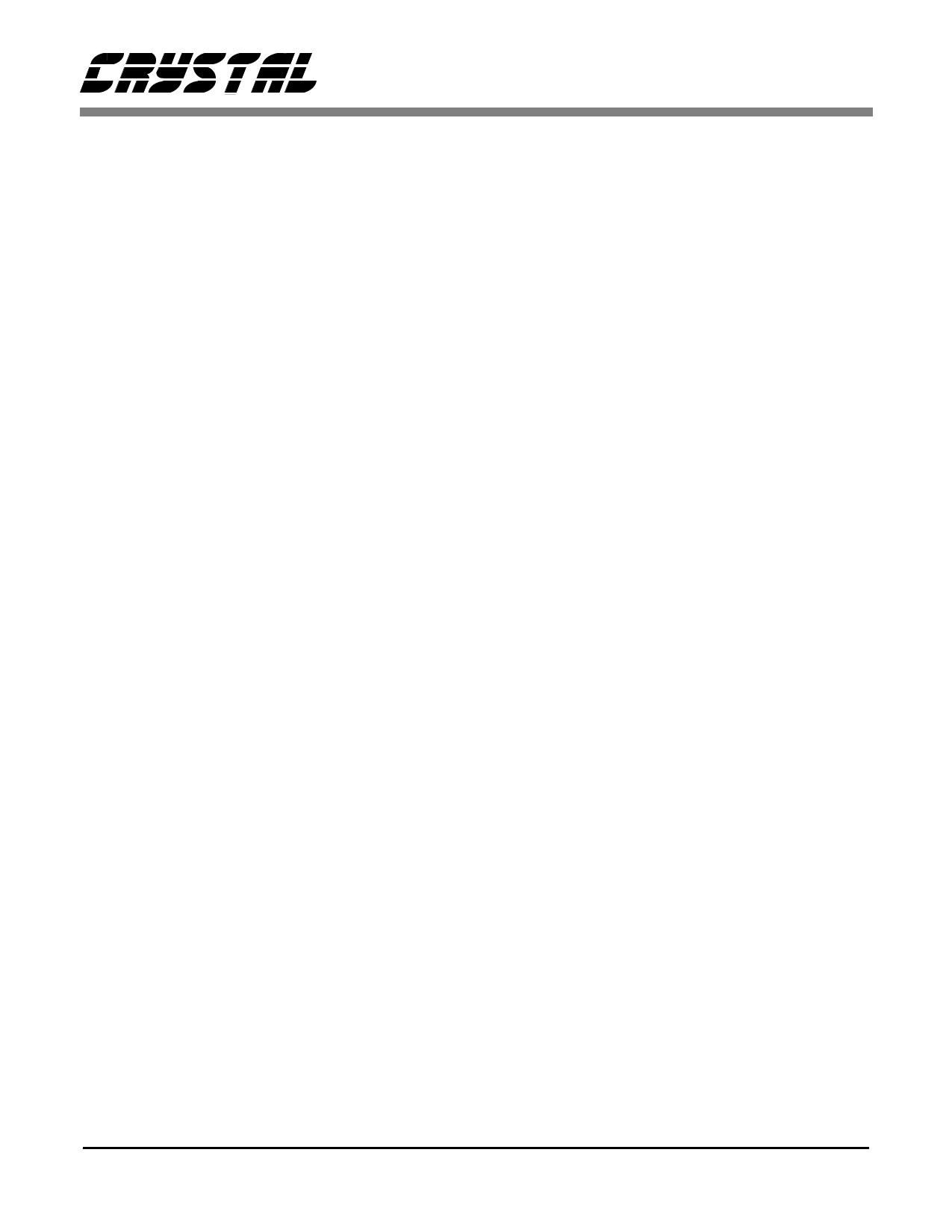CDB6420 Ver la hoja de datos (PDF) - Cirrus Logic
Número de pieza
componentes Descripción
Lista de partido
CDB6420 Datasheet PDF : 52 Pages
| |||

CS6420
performing adequately. The CS6420 implements a
half-duplex mode to guarantee communication
even when the echo canceller is disabled.
When the CS6420 is first powered on, or emerges
from a reset, the echo canceller coefficients are
cleared, and the echo cancellers provide no benefit
at this point. The half-duplex mode is on to prevent
howling and echo from interfering with communi-
cation. Once the CS6420’s adaptive filters have
adapted sufficiently, the half-duplex mode is auto-
matically disabled, and full-duplex communication
can occur.
The half-duplex mode allows three states: transmit,
receive, and idle. In the transmit state, the transmit
channel is open and the receive channel is muted.
The receive state mutes the transmit channel. The
idle state is an internal state which is used to en-
hance switching decision making. The CS6420
must be idle before it will allow a state change be-
tween transmit and receive.
The half-duplex controller can be susceptible to
echo, so a holdover timer is provided to help pre-
vent false switching. Holdover will force the chan-
nel to remain in its current state for a fixed duration
after speech has stopped. HDly (Register 2, bits 9
and 8) sets the duration of the holdover. Longer
holdover will tend to make interrupting much hard-
er, but will be much more robust to spurious
switching caused by echo.
AGC
The CS6420 implements a peak-limiting AGC in
both the transmit and receive directions in order to
boost low-level signals without compromising per-
formance when high amplitude signals are present.
The technique effectively results in dynamic range
compression.
The AGC works by setting a reference level based
on the value represented by TVol (Register 1, bits
9-5) for the transmit direction and RVol (Register
0, bits 9-5) for the receive direction. If the signal
from the input is above this reference, it is attenu-
ated to the reference level with an attack time of
125 µs. This attenuation level decays with a time
constant of 30 ms unless another signal greater than
the reference level is detected. After the attenua-
tion, a post-scaler scales the reference level to full-
scale (the maximum digital code), which amplifies
all signals by the difference between the reference
level and full-scale.
For example, Figure 9 shows how the AGC works
with a reference level of +30 dB (Word = 00000).
Any signal greater than 30 dB below full-scale (a),
is scaled down to 30 dB (b). This signal is then
scaled up +30 dB (the reference level) to provide
the final output (c). Note that the combination of at-
tenuation and gain results in less than +30 dB total
gain being applied. If the input signal is below 30
dB below full-scale (d), no attenuation is done and
the full +30 dB of gain is applied to the signal (e).
When the reference level is set to +0 dB, the AGC
is effectively disabled. Volume control is imple-
mented by digital attenuation in 3 dB steps from
this point on down. The maximum gain is +30 dB
and the minimum is -60 dB in 3 dB steps. The low-
est gain setting (11111) mutes the path. The signal
scaling takes place in between the two cancellers,
and so does not disturb the echo canceller as chang-
ing gain in the echo path would (see the Adaptive
Filter section for more details).
Suppression
Echo cancellation is somewhat of a misnomer in
that echo is merely attenuated, not entirely can-
celled. Some residual echo still exists after the
summing node. This residual echo, though very
low, may be audible when the near-end talker is not
speaking. Suppression further attenuates the ech-
oed signal.
The CS6420 employs supplementary echo suppres-
sion which adds attenuation on top of the cancella-
tion to remove the residual echo. For example, the
DS205PP2
25